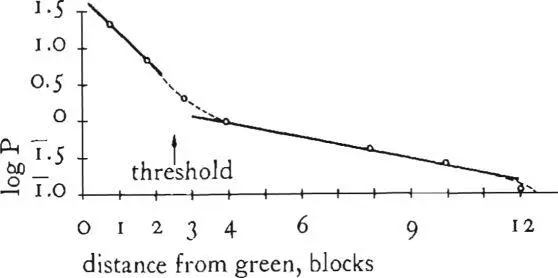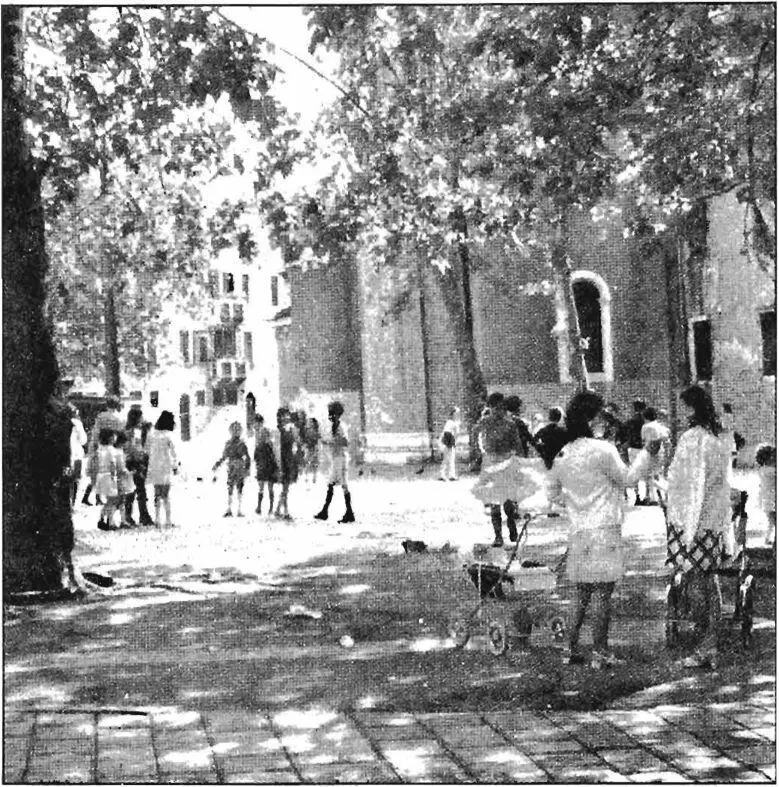Christopher alexander - A pattern language
Здесь есть возможность читать онлайн «Christopher alexander - A pattern language» весь текст электронной книги совершенно бесплатно (целиком полную версию без сокращений). В некоторых случаях можно слушать аудио, скачать через торрент в формате fb2 и присутствует краткое содержание. Жанр: Прочая научная литература, на английском языке. Описание произведения, (предисловие) а так же отзывы посетителей доступны на портале библиотеки ЛибКат.
- Название:A pattern language
- Автор:
- Жанр:
- Год:неизвестен
- ISBN:нет данных
- Рейтинг книги:3 / 5. Голосов: 1
-
Избранное:Добавить в избранное
- Отзывы:
-
Ваша оценка:
- 60
- 1
- 2
- 3
- 4
- 5
A pattern language: краткое содержание, описание и аннотация
Предлагаем к чтению аннотацию, описание, краткое содержание или предисловие (зависит от того, что написал сам автор книги «A pattern language»). Если вы не нашли необходимую информацию о книге — напишите в комментариях, мы постараемся отыскать её.
A pattern language — читать онлайн бесплатно полную книгу (весь текст) целиком
Ниже представлен текст книги, разбитый по страницам. Система сохранения места последней прочитанной страницы, позволяет с удобством читать онлайн бесплатно книгу «A pattern language», без необходимости каждый раз заново искать на чём Вы остановились. Поставьте закладку, и сможете в любой момент перейти на страницу, на которой закончили чтение.
Интервал:
Закладка:
a. Did you walk or drive?
b. How many blocks have you come?
c. How many days ago did you last visit the park?
On the basis of the first question we rejected five subjects who had come by car or bike. The third question gave for each person a measure of the number of times per week that person comes to the park. For example, if he last came three days ago, we may estimate that he typically comes once per week. This is more reliable than asking the frequency directly, since it relies on a fact which the person is sure of, not on his judgment of a rather intangible frequency.
We now construct a table showing the results. In the first column, we write the number of blocks people walked to get to the park. In the second column we write a measure of the area of the ring-shaped zone which lies at that distance. The area of this ring-shaped zone is proportional to the difference of two squares. For example, the measure of area of the ring at three blocks, is 3 2— 2 2~ 5.
| RadiusBlock | R Measure of area s of the ring at Radius R | Trips/week | P. (Relative probability of trips, for any one person) | Log P. |
| 1 | 1 | 19-5 | 19-5 | 1.29 |
| 2 | 3 | 2 6 | 8.7 | •94 |
| 3 | 5 | 11 | 2.2 | •34 |
| 4 | 7 | 6 | 0.9 | T.95 |
| 5 | 9 | 0 | — | — |
| 6 | 1 1 | 0 | — | — |
| 7 | 13 | 0 | — | — |
| 8 | 15 | 6 | 0.4 | T.60 |
| 9 | *7 | 0 | —- | — |
| 10 | 3 | 0.2 | T.30 | |
| 11 | 21 | 0 | — | — |
| 12 | 23 | 2.5 | 0.1 | T.o |
| Analysis of visiting fattern to | a local green |
60ACCESSIBLE GREEN
In the third column, we write the number of people who have come from that distance, each person multiplied by the number of trips per week he makes to the park. This gives us a measure of the total number of trips per week, which originate in that ring.
In the fourth column we write the number of trips per week divided by the area of the ring. If we assume that people are distributed throughout the entire area at approximately even density, this gives us a measure of the probability that any one person, in a given ring, will make a trip to the park in a given week.
In the fifth column we write the logarithm (base io) of this probability measure P.
Simple inspection of these data shows that while the probability measure, P, drops in half between one and two blocks, it drops by a factor of four between two and three blocks. Its rate of decrease diminishes from then on. This indicates that an individual’s use of a park changes character radically if he lives more than three blocks away.
For more precision let us examine the relationship between distance and the logarithm of P. Under normal circumstances, the frequency of access to a given center will vary according to some distance decay function, such as P = Ae — Br, where A and B are constants, and r is the radius. This means that if behavior and motivation are constant with respect to distance, and we plot the log of P against the radius, we should get a straight line. Any aberration from the straight line will show us the threshold where one kind of behavior and motivation changes to another. This plot is shown below:
 |
| Beyond two or three blocks use of the green drops off drastically. |
TOWNS
We see that the resulting curve is S-shaped. It starts going down at a certain angle, then gets much steeper, and then flattens out again. Apparently there is a threshold somewhere between 2 and 3 blocks, where people’s behavior and motivation change drastically.
Those people who live in close proximity to a green follow a high intensity use function—it has a steep gradient and it is very sensitive to increasing distance. But those people who live far from a green appear to adopt a low intensity use function (indicated by a shallower gradient), and their behavior is not as sensitive to distance. It is as if those people with ready access to a green display a full, free responsiveness to it; while people far away have lost their awareness of it and have suffered a reduced sensitivity to the pleasures of the green—for thees people, the green has ceased to be a vital element in their neighborhood life.
Apparently, within a two to three block radius (a three-minute walking distance) people are able to satisfy their need for access to a green, but a greater distance seriously interferes with their ability to meet this need.
This inference is rather unexpected. We know that people who are close to a green go to it fairly often, presumably because they need the relaxation. The people who live more than three minutes walk from the green also need the relaxation, presumably. But in their case the distance prevents them from meeting their need. It seems then, that to meet this need, everyone—and that means every house and every workplace—must be within three minutes of such a park.
One question remains. How large must a green be in order to satisfy this need? In functional terms this is easy to answer. It must be large enough so that, at least in the middle of it, you feel that you are in touch with nature, and away from the hustle and bustle. Our current estimates suggest that a green should be as much as 60,000 square feet in area, and at least 150 feet wide in the narrowest direction in order to meet this requirement.
Therefore:
Build one open public green within three minutes’ walk —about 750 feet—of every house and workplace. This
60 ACCESSIBLE GREEN
means that the greens need to be uniformly scattered at 1500-foot intervals, throughout the city. Make the greens at least 150 feet across, and at least 60,000 square feet in area.
greens
fB
t
1500 foot intervals
\ <
la
150 feet across
\
•£*
Pay special attention to old trees, look after them—tree places (171); shape the green so that it forms one or more positive room-like spaces and surround it with trees, or walls, or buildings, but not roads or cars—positive outdoor space (106), garden wall (173); and perhaps set aside some part of the green for special community functions—holy ground (66), GRAVE SITES (70), LOCAL SPORTS (72), ANIMALS (74), SLEEPING IN PUBLIC (94) . . . .
| 61 SMALL PUBLIC SQUARES** |
|---|
 |
3 10
. . . this pattern forms the core which makes an activity node (30): it can also help to generate a node, by its mere existence, provided that it is correctly placed along the intersection of the paths which people use most often. And it can also help to generate a promenade (31), a work community (41), an identifiable neighborhood (14), through the action of the people who gather there. But it is essential, in every case, that it is not too large.
Читать дальшеИнтервал:
Закладка:
Похожие книги на «A pattern language»
Представляем Вашему вниманию похожие книги на «A pattern language» списком для выбора. Мы отобрали схожую по названию и смыслу литературу в надежде предоставить читателям больше вариантов отыскать новые, интересные, ещё непрочитанные произведения.
Обсуждение, отзывы о книге «A pattern language» и просто собственные мнения читателей. Оставьте ваши комментарии, напишите, что Вы думаете о произведении, его смысле или главных героях. Укажите что конкретно понравилось, а что нет, и почему Вы так считаете.












